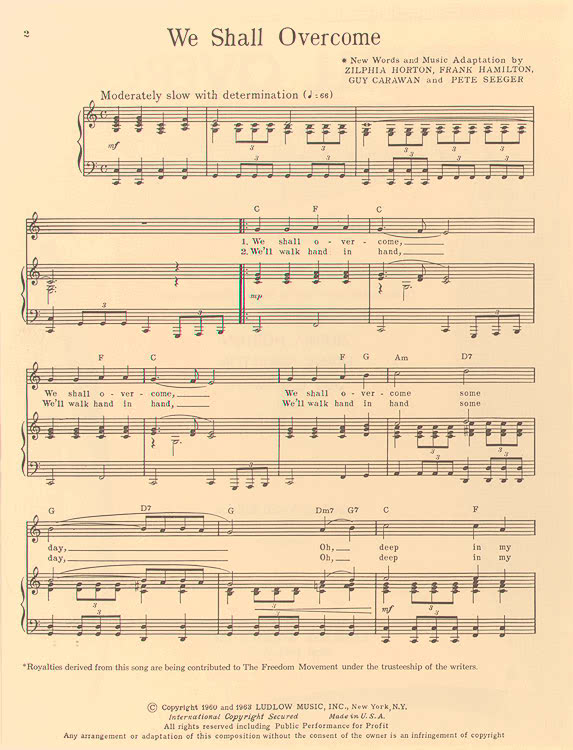Learning from the Source: We Shall Overcome

Students will analyze historical and contemporary primary sources to examine how citizens persevered to overcome injustice and affect change during the 1960s civil rights era and consider the lessons the first March to Selma in 1965 provides for us today.
Enduring understanding: Time, place, and culture influence our perspectives on people and issues.
Essential question: How can we strive to overcome injustice?
Lesson materials
- We Shall Overcome sheet music (curator note)
- Tracing the Long Journey of ‘We Shall Overcome’ blog post
- Jamila Jones video clip (32:29 to 37:43) YouTube
- The First March to Selma text excerpt (pages 1 and 2)
- First Selma march photos and personal memories tweeted by U.S. Representative John Lewis
- Sensory Exploration chart
- Pete Seeger singing We Shall Overcome
- Excerpt from President Johnson’s address to Congress after first Selma march (2:03 to 2:42) YouTube
- The First March to Selma text excerpt (page 3)
Lesson prep
- Test to make sure you can play the videos on your school network.
- If students have access to technology, they may go online and choose a photo from the John Lewis tweets to use for the sensory exploration activity (see #10 below). If not you may choose one photo and display it to the class or choose several photos, printing out copies for students to use.
Lesson implementation
- Write “Overcome” on the board and ask students if they can explain what the word means (if necessary, break down the word into its parts).
- Ask students to take a couple of minutes to jot down an experience demonstrating how they overcame something. Allow a few minutes for some students to share their experiences.
- Display the We Shall Overcome sheet music and briefly review the verses.
- As a class, or individually, have students read the first 4 paragraphs from the blog post Tracing the Long Journey of ‘We Shall Overcome’ (above the embedded videos).
- Ask students to summarize what they learned.
- Play the Jamila Jones video clip (32:29 to 37:43).
- Ask students to comment on their views of the power of song.
- Direct students to read only pages 1 and 2 of the First March to Selma text excerpt.
- Tell students that on March 7, 2016, the 52nd anniversary of the first Selma march, U.S. Representative John Lewis tweeted a series of photos and personal memories from the march. Display the photos and accompanying Tweets EXCEPT for the final tweet/photo.
- Pass out a sensory exploration chart to each student and ask them to put themselves in the place of someone in one of the pictures and write what their senses would be experiencing in that scene. As they work, you might play the video (or just the sound) of Pete Seeger singing We Shall Overcome.
- Have students share their picture and the words they generated from the sensory exploration or direct students to write a poem using the words generated to accompany the photo.
- Play a brief excerpt from President Johnson’s address to Congress after first Selma march (21:56-24:36). Then ask students to hypothesize what happened next.
- Have students read page 3 of the First March to Selma text excerpt, then discuss how what they learned from the text compares with their hypotheses.
- Show the final photo from the First Selma march photos and personal memories tweeted by U.S. Representative John Lewis. Ask students to respond to the tweet and then to create a similar tweet that relates to a contemporary issue in which people are working to affect change.
Related resources
- We Shall Overcome essay by Sam Rosenthal
- Today in History: First March from Selma
- Primary Source Spotlight: Civil Rights more primary source collections
